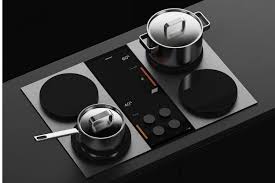When you think about home appliances that run on batteries, what’s the first thing that comes to mind? Flashlights? Remote control? Maybe a cordless drill? A weedwacker? Some sort of emergency radio?
Anyway, the home appliances that come to mind are small ones, where portability is key. (Some of you may be old enough to remember remote controls that were tethered to the TV, but a plug-in flashlight? Inconceivable!)
But appliance-by-battery-operation may be moving beyond the realm of small appliances and into the domain of heavy appliances like stoves, refrigerators, and washing machines. In April, the Wall Street Journal weighed in:
“Imagine that your major home appliances run on batteries. Using regular cords that plug into standard 120-volt outlets, the appliances charge themselves when power is cheapest and store enough energy so that during a blackout, you can still cook, do laundry and keep your refrigerator going, while also recharging your smartphone and ensuring your Wi-Fi router never loses connectivity.” (WSJ)
Then I saw a more recent article by Bill Schweber in EE Times which wondered whether battery-operated “full-sized, fixed-in-place units” were becoming a thing. Schweber focused on induction-based cooking stoves, which are pretty much the first major appliance that can come with batteries. He cited a couple of companies that will be shipping battery-run induction ranges this year. They’re pretty pricey – higher than similar non-battery ranges – but there are tax credits and rebates that bring the battery vs. non-battery options into near cost parity.
with batteries. He cited a couple of companies that will be shipping battery-run induction ranges this year. They’re pretty pricey – higher than similar non-battery ranges – but there are tax credits and rebates that bring the battery vs. non-battery options into near cost parity.
But the battery-ization of appliances won’t stop with induction ranges. If you’ve got a heavy duty battery in house, it could be used to power other appliances, or back them up, which will introduce another element of household complexity.
The battery-operated/-backed appliance is an interesting premise but with lots of ripple-effect implications. Batteries of this capacity need careful management and attention, starting with their own sophisticated battery management system (BMS). This will likely need to be integrated into a smart-home controller as well as the owner’s home network and smartphone. Larger battery setups also make physical demands for access, a strong floor and code-approved cabling; there are maintenance, repair and related spare parts issues as well.
And then there’s the issue of what powers the batteries, which need to be kept charged (and, eventually, replaced). While the move towards better living through batteries seems attractive in that it helps us as a society become less reliant on fossil fuels, the power needs to come from somewhere – hopefully from a source like solar or wind, and not from a coal-fired power plant.
Schweber points out a couple of flaws in jumping into an all-battery world. One is the “availability of rare Earth and other materials needed for batteries, along with what it takes to mine, refine and process these elemental substances.” (Battery manufacture is very energy-demanding.)
So caution is in order. However attractive battery power may seem, it isn’t an immediate panacea for the problem of the corrosive impact of fossil fuels on the environment, or climate change.
But as we move – slowly but inevitably – towards more renewable sources of energy, batteries are likely to be increasingly in the mix. We’re seeing it with the (slow but inevitable) growth of interest in EVs, why not in home appliances. Even for those of us still living on the grid, we may be living in battery-operated homes in the not too distant future.
